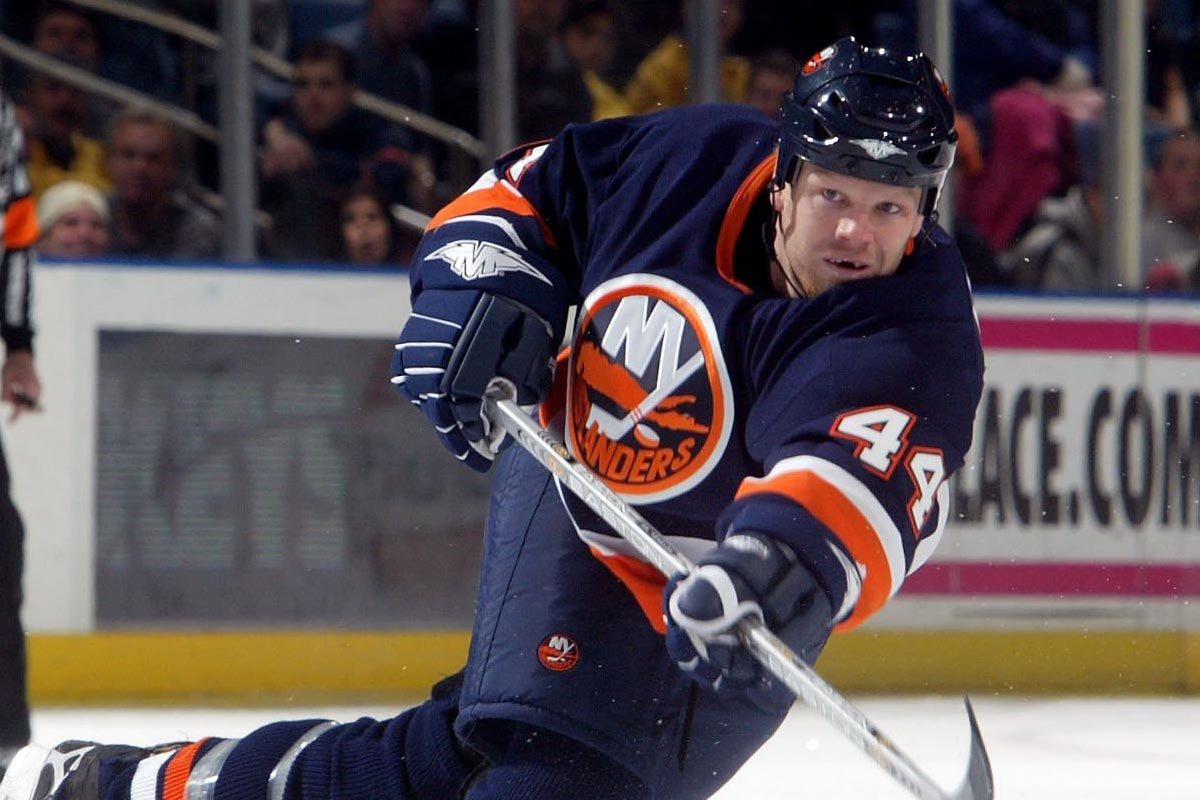by Patrick Williams
New NHL, new rules, new brand of hockey.
This was supposed to be season in which players like John Erskine were tossed to the pro hockey scrap heap.
After all, what place would there be for a slow-footed, physical defenseman who had bounced up and down between the NHL and AHL and at age 25 was still a borderline NHL player?
Instead, Erskine has found a new NHL life in a new organization and could now reasonably be considered to be entrenched in the NHL after spending parts of six seasons in the AHL, including three games this season with the Iowa Stars. After never having logged more than 33 NHL games in one season, Erskine now has 35 NHL games to his name this season, nine of them with the New York Islanders after being swapped for Janne Niinimaa on Jan. 10.
After all, the Islanders dispatched three players — Robert Nilsson, Wyatt Smith and Joel Bouchard — to Bridgeport last weekend to get in some work during the NHL’s Olympic break. Erskine, however, will not be joining the trio, a fate that may have awaited him had he remained in Dallas.
The turmoil and hubbub on Long Island turned out to be the break that Erskine needed. The Dallas Stars’ second-round pick in the 1998 NHL Entry Draft, Erskine had grown quite stale within the Dallas organization. The mediocre Dallas farm system certainly did not help matters, particularly as Erskine ended up spending last season in Houston with a few spare Dallas brethren in a sea of Minnesota Wild prospects.
“I think I needed something,” Erskine admitted last Saturday after a 2-1 Islanders win in New Jersey that had Erskine logging 17:54 of ice time in a pairing with Brent Sopel that also included time on the penalty kill. “A fresh start. I had been in Dallas (for years) and it had been the same thing — seventh ‘D’ and just kind of in and out of the lineup.”
“It’s been a little different,” Erskine said of his move to the Eastern Conference. “The different divisions, playing the different teams and all that stuff. But I think that basically the trade is better for me. It has given me an opportunity to play here and play in those situations that I wasn’t playing (in Dallas).”
It is not as if the 25-year-old from Kingston, Ont. — listed at 6-foot-4 and 219 pounds, but looking bigger than that — cannot play the game. A three-year OHL career with the London Knights wrapped up with Erskine winning the Max Kaminsky Trophy as the OHL’s top defenseman for the 1999-2000 season, and he chipped in 12 goals that year on the blue line of a last-place Knights team.
A physical, classically stay-at-home defenceman, Erskine plays within his limitations and offers the Islanders a physical backline presence. To be sure, with the likes of Eric Godard, Arron Asham and Erskine around, the Islanders are plenty tough by NHL standards, with Erskine putting up 81 NHL penalty minutes so far this season. Now in his sixth pro season, Erskine is a top-notch enforcer who fought all that the AHL had to offer.
But surely all of the talk about rule changes and a new sleeker, slicker NHL last summer to had to concern Erskine, no?
It did, Erskine acknowledged, and it was a matter that he discussed with his agent prior to re-upping with the Stars last August.
“It was definitely an issue going into camp,” recalled Erskine, who made a successful adjustment to the new brand of NHL hockey his priority last fall.
“The game has changed a lot since the previous year. You constantly have to work on your game to stay up here.”
So Erskine has adjusted. The big hits are out and an emphasis on positional play is the priority now. Head coach Brad Shaw, who spent three AHL seasons in Cincinnati, has let Erskine know what he needs to do to earn a regular spin on the Islanders’ blue line.
“He wants me to always play positionally,” Erskine explained.
Such an approach fits fine for Erskine. Between inexperience, fatigue and a league full of youngsters in their early twenties looking to make a mark, the AHL is far more scrambly. So, a nice, simple game is fine by Erskine.
“I think in some aspects of the game, it’s almost easier to play up here. Everyone is in their position at all times.”

TheAHL.com features writer Patrick Williams has been on the American Hockey League beat for nearly two decades for outlets including NHL.com, Sportsnet, TSN, The Hockey News, SiriusXM NHL Network Radio and SLAM! Sports, and was most recently the co-host of The Hockey News On The ‘A’ podcast. He was the recipient of the AHL’s James H. Ellery Memorial Award for his outstanding coverage of the league in 2016.


































